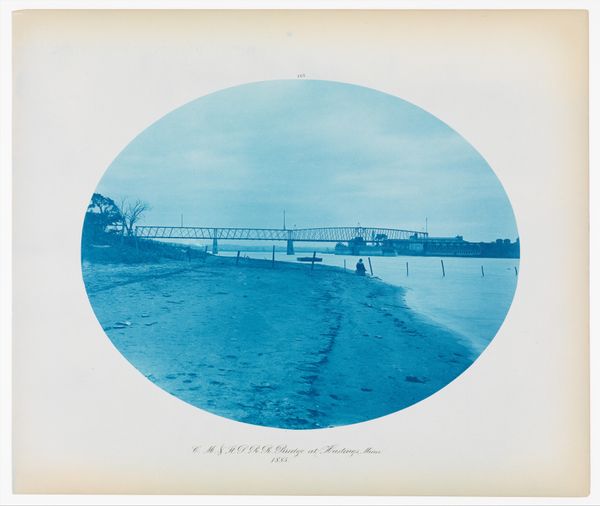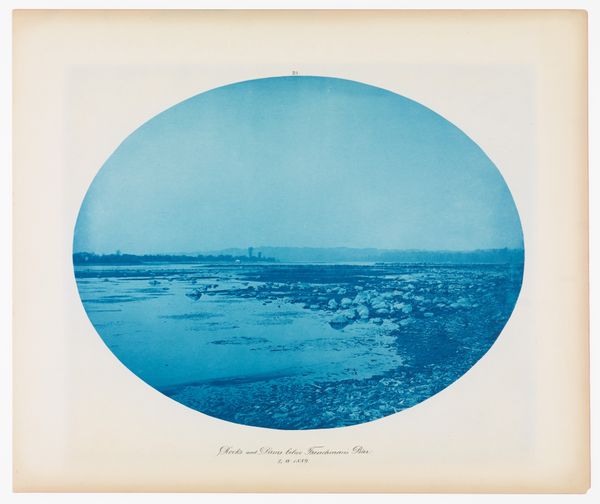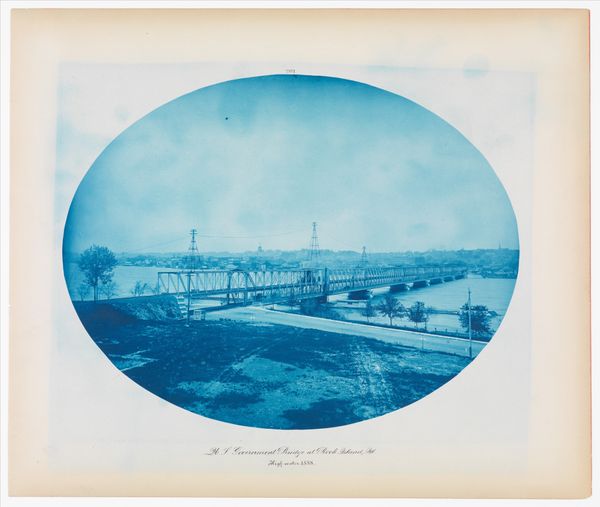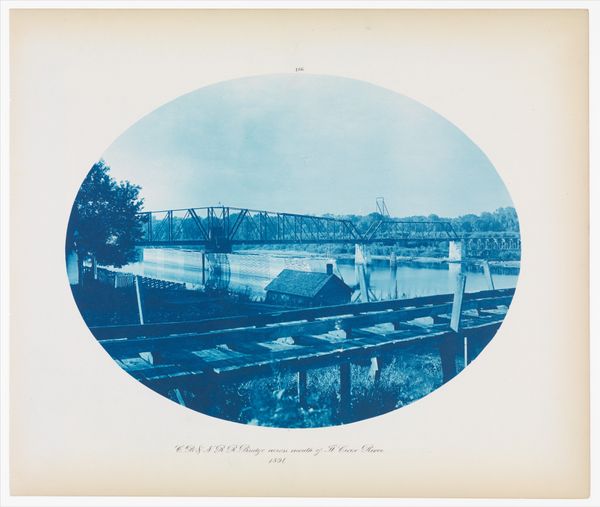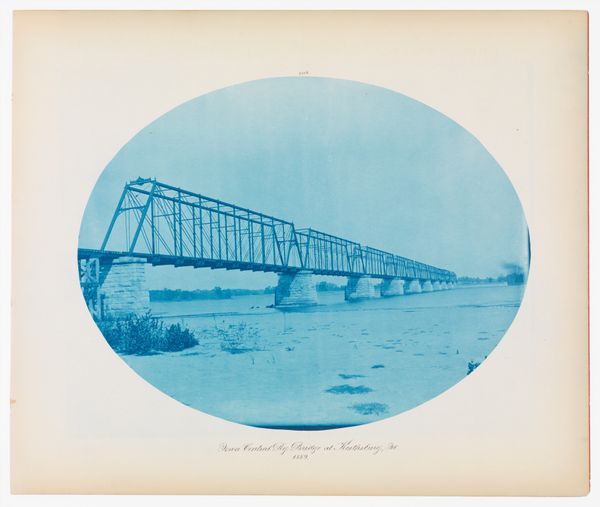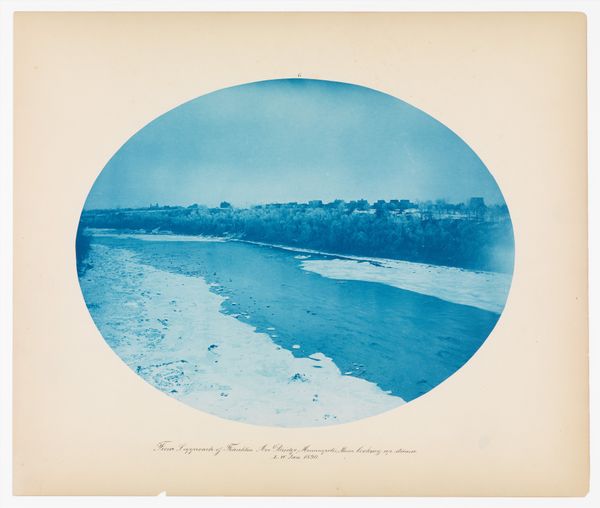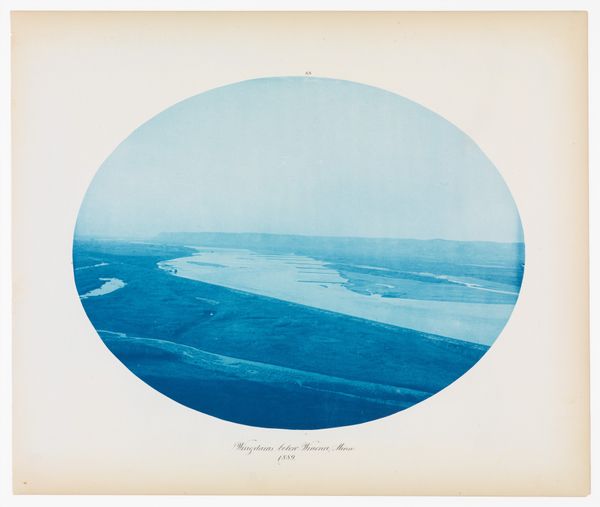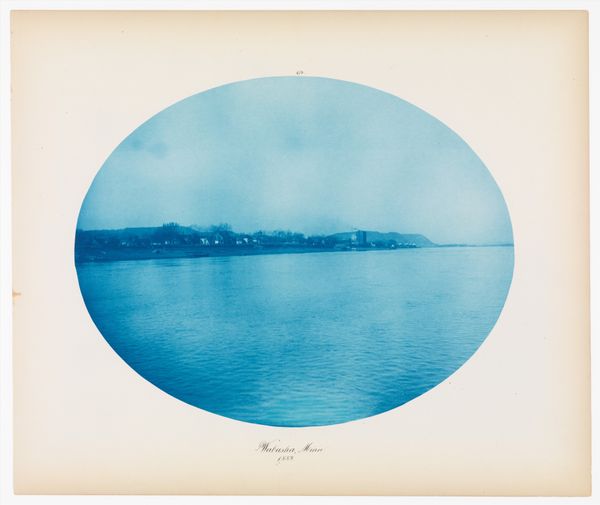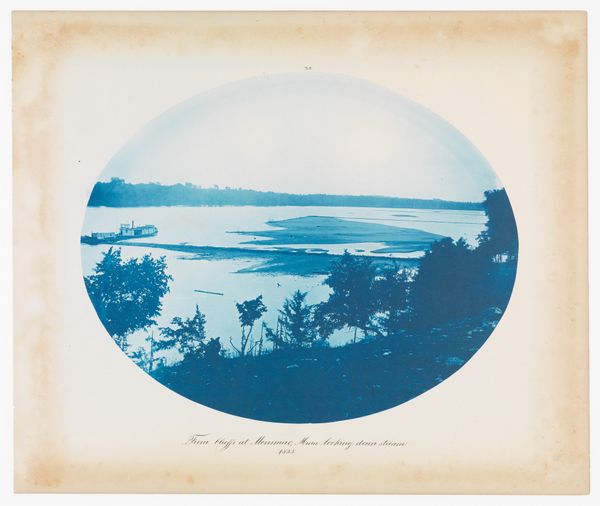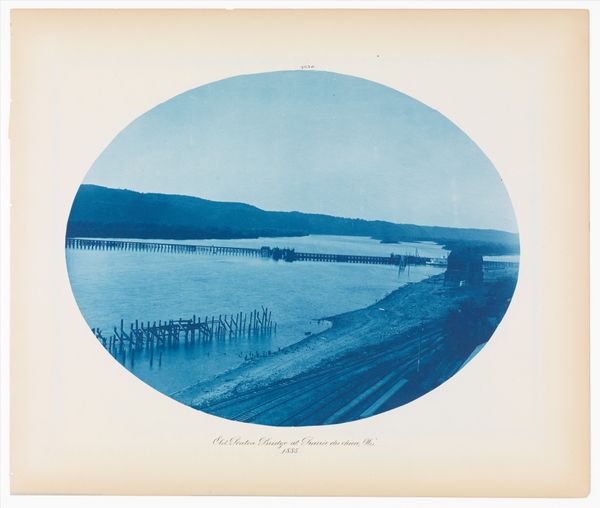
No. 199. Draw Span of Chicago & North Western Rail Road Bridge at Clinton, Iowa 1885
0:00
0:00
print, cyanotype, photography, albumen-print
#
16_19th-century
# print
#
landscape
#
cyanotype
#
photography
#
albumen-print
#
realism
Dimensions: Sheet: 14 1/2 × 17 3/16 in. (36.8 × 43.7 cm)
Copyright: Public Domain
Curator: Henry Bosse’s cyanotype print, "No. 199. Draw Span of Chicago & North Western Rail Road Bridge at Clinton, Iowa," created in 1885, is quite striking. It's currently held in the collection of the Metropolitan Museum of Art. Editor: The pervasive blue lends a melancholic air, almost dreamlike, doesn't it? The eye is immediately drawn to the bridge—such a strong horizontal element bisecting the oval composition. Curator: Indeed. But look closer, past the aesthetics. This image isn't just about the bridge itself. Consider the era: late 19th century America, rapid industrialization, westward expansion. This bridge facilitated the movement of goods and people, reinforcing power structures and resource extraction. Editor: Certainly. But the stark contrast between the intricate ironwork of the bridge and the almost brutalist depiction of the riverbank. The foreground is heavily textured. I keep wanting to touch it. This makes the central composition much stronger through contrasts of textures. Curator: Precisely. Bosse, as a photographer and draftsman for the U.S. Army Corps of Engineers, was documenting infrastructure. These images weren't made as art, but as documentation vital to engineering and governance. Yet, in framing his work through realism, what socio-economic story is revealed about this landscape that remains present today? Editor: Semiotically, the image resonates even in the composition: the use of negative space surrounding the bridge. This helps define this structure's power and its relationship to its environment. Curator: The technical process itself matters. The cyanotype, a relatively accessible printing method at the time, democratized image-making to some extent, although its application remained largely within governmental and industrial sectors, leaving open questions of representation for communities affected by infrastructural developments. Editor: Reflecting on it, I’m intrigued by how Bosse merges technical documentation with a palpable artistic sensibility. The oval frame is rather unconventional, which gives it a unique perspective, quite separate from sterile archival data. Curator: Ultimately, considering the print's historical role, alongside its contemporary presence in an art institution, grants an opening to reflect on technology, power, and representation that extend into modern issues about climate change and its disparate impact on rural communities.
Comments
No comments
Be the first to comment and join the conversation on the ultimate creative platform.
